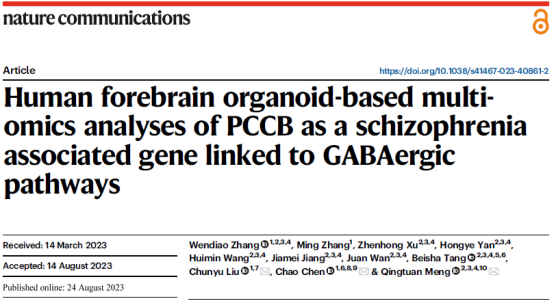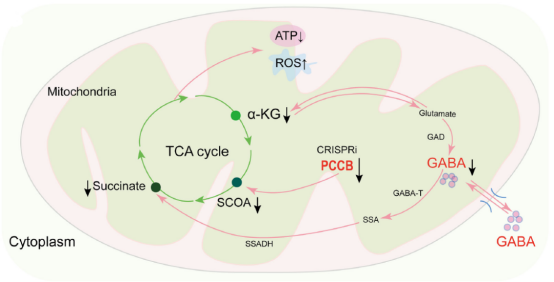Recently, the research team led by Prof. Meng Qingtuan from the Multi-omics Research Center for Brain Diseases of the First Affiliated Hospital of University of South China published a research paper titled “Human forebrain organoid-based multi-omics analyses of PCCB as a schizophrenia associated gene linked to GABAergic pathways” in the internationally renowned journal Nature Communications (IF=16.6). Dr. Zhang Wendiao is the first author of the paper. Prof. Chen ChaoProf. Liu Chunyu from Central South University are the co-corresponding authors,Prof. Meng Qingtuan serves as the senior corresponding author.

Schizophrenia (SCZ) is a polygenic disorder involving multiple risk genetic locigenes. Identifying reliable SCZ risk geneselucidating their functions are key to clarifying the disease mechanism. In this study, the authors integrated data from multiple published SCZ transcriptome-wide association studies (TWAS), gene differential expression,gene co-expression network analysis,found that propionyl-CoA carboxylase subunit beta (PCCB) is a reliable SCZ risk gene,its downregulation is associated with the risk of SCZ. Existing studies have found that the PCCB gene is related to the metabolism of fatty acids, amino acids,other substances in mitochondria. However, it is unclear how the reduced expression of the PCCB gene leads to the risk of SCZ.
Based on the transcriptomic analysis of 3D human brain organoids models, it was found that PCCB knockdown mainly leads to the dysfunction of the γ-aminobutyric acid (GABA) signaling pathway Further metabolomics analysisELISA experiments revealed that PCCB knockdown inhibits the synthesis of key tricarboxylic acid (TCA) cycle intermediates α-ketoglutarate, succinyl-CoA,succinate. This reduction not only leads to a decrease in mitochondrial ATP synthesisan increase in reactive oxygen species levels but also reduces the content of GABA in cells. Microelectrode array (MEA) electrophysiological detection found that PCCB knockdown leads to an increase in the firing frequencya decrease in synchronicity of brain organoids, indicating that the synaptic functionneural network connections of brain organoids are impaired. The addition of exogenous α-ketoglutarate to the culture medium of PCCB-knockdown brain organoids can rescue deficits of TCA cycle intermediatesGABA content, indicating that PCCB functions through the TCA cycle pathway.

In summary, this study, through multi-omics analysis of human brain organoids, revealed the biological function of PCCB and its role in SCZ, linking the “mitochondrial hypothesis” and the “GABA hypothesis” of SCZ, providing a basis for understanding the pathogenesis of SCZ.
The above-mentioned research was supported by the National Natural Science Foundation of China, the Outstanding Youth Foundation of Hunan Province, the Hunan Provincial Youth ScienceTechnology Innovation (Lotus Scholar Program) Talent Program., etc.
Link to original article:https://doi.org/10.1038/s41467-023-40861-2

